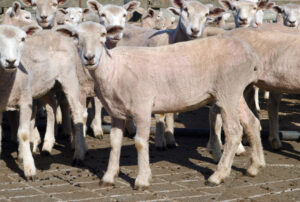The best cure for high prices is high prices, in markets, this is a common saying. It implies that high prices will drive higher supply, which sees prices fall. In livestock markets, the wheel turns slowly, but we are now seeing the impact of 10 years of rising prices. There is some good news, however.
It will be of little comfort to growers holding old-season lambs, or marking new-season lambs, but the good news is that the export market is absorbing a lot of the increase in lamb supply. We have seen slaughter rates for lambs climb in May posting some of the highest numbers since 2018. To get rid of the meat exports had to climb, and they have.
Figure 1 shows Australian lamb exports in May, where lamb exports were up 7% year on year, the third highest on record, and the strongest since May 2019 (Figure 1). May is traditionally the strongest month for lamb exports, and this year it beat the previous highest, set in March, by 13%.
There is plenty of lamb being exported, but the destinations have shifted in the last year. The US has been our biggest market since 2020, consuming on average a quarter of our exports. This year volumes to the US have fallen a massive 23% for the first five months, despite total exports being up 5.5%. The US share of our exports has fallen to 20%.
The US decline has been matched by an increase in exports to China and the Middle East. Figure 2 shows lamb exports to China jumped 40% on April, and 60% on May 2022 to get back above 7,000 tonnes.
Volumes exported to the Middle East seem to be rising as prices fall, and competition from the US weakens. In May, the Middle East took 57% more lamb than last year, and increased their share of exports to 17%, up from 13% in 2021 and 2022. Figure 3 shows exports to the Middle East are still well below the levels seen last decade, but higher volumes and cheaper prices might encourage consumption there.
What does it mean?
The very strong lamb supply was finding markets overseas back in May, but it seems supply is overwhelming slaughter capacity in June which is causing price declines. Hopefully at the current cheaper price levels exporters can move even more lamb, and prices at the saleyard level can even out at some stage.
Have any questions or comments?
Key Points
- Lamb exports in May were the third-highest monthly total on record.
- Weaker demand from the US has been offset by increased volumes to China and the Middle East.
- Higher lamb supply is depressing prices, but that might be required to move volumes.
Click on figure to expand
Click on figure to expand
Click on figure to expand
Data sources: USDA, Mecardo















